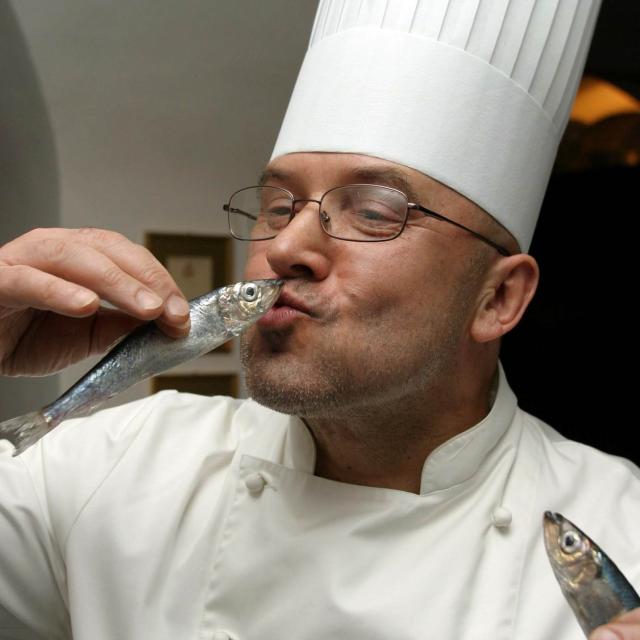I love Estonian small herring

Dimitri Demjanov – founder of Culinary Institute of Estonia
Small herring, sprat and products made of them could be similar geographically protected products as cognac in France or feta cheese in Greece – these are the only foodstuff characteristic to our region, which fishing traditions have been preserved by local coastal inhabitants for centuries. Small herring, for example, could make Estonia famous all over the world, and it should be the primary article in the menus of Estonian restaurants.
As many other people, I was not very keen friend of fish in my childhood. People usually learn to know and appreciate fish only in 30s, because it is a very delicate product – its preparation requires skills, and in order to enjoy the best, recently caught fish, you must have luck with weather as well.
Many years of campaign ended with recognition of small herring as Estonian national fish, and I am very glad for that. Small herring can be eaten all the year round – in spring and autumn, the fisherman bring the most nutritious herrings from the sea, while in summer and winter people usually eat more smoked, salted and spiced sprat and small herring.
Although for many Estonians the most well-known herring dishes are fried small herring and small herring in tomato sauce, the abundance of small herring dishes actually reaches thousands – caraway herrings, onion herrings, citrus herrings, curry herrings, chilli herrings etc. Small herrings are eaten fried, baked, roasted, dried, salted etc.
Promotion of Estonian small herring also helps to support the fading culture of coastal fishermen, therefore we have launched the project of Kruger Fish House in Viimsi in cooperation with the Museum of Coastal Folk. We serve various fish dishes, and small herring has a special place in its traditional as well as contemporary form. However, every domestic cook, who has dared to experiment with small herrings, has their secret recipe – so let’s pass it from generation to generation, and be proud that we have small herring on the table.
Small herring, sprat and products made of them could be similar geographically protected products as cognac in France or feta cheese in Greece – these are the only foodstuff characteristic to our region, which fishing traditions have been preserved by local coastal inhabitants for centuries. Small herring, for example, could make Estonia famous all over the world, and it should be the primary article in the menus of Estonian restaurants.
As many other people, I was not very keen friend of fish in my childhood. People usually learn to know and appreciate fish only in 30s, because it is a very delicate product – its preparation requires skills, and in order to enjoy the best, recently caught fish, you must have luck with weather as well.
Many years of campaign ended with recognition of small herring as Estonian national fish, and I am very glad for that. Small herring can be eaten all the year round – in spring and autumn, the fisherman bring the most nutritious herrings from the sea, while in summer and winter people usually eat more smoked, salted and spiced sprat and small herring.
Although for many Estonians the most well-known herring dishes are fried small herring and small herring in tomato sauce, the abundance of small herring dishes actually reaches thousands – caraway herrings, onion herrings, citrus herrings, curry herrings, chilli herrings etc. Small herrings are eaten fried, baked, roasted, dried, salted etc.
Promotion of Estonian small herring also helps to support the fading culture of coastal fishermen, therefore we have launched the project of Kruger Fish House in Viimsi in cooperation with the Museum of Coastal Folk. We serve various fish dishes, and small herring has a special place in its traditional as well as contemporary form. However, every domestic cook, who has dared to experiment with small herrings, has their secret recipe – so let’s pass it from generation to generation, and be proud that we have small herring on the table.